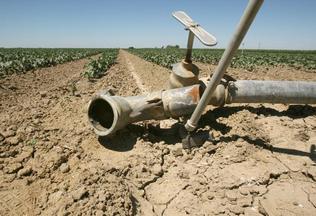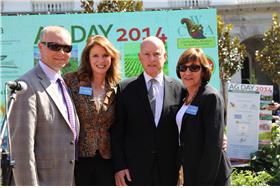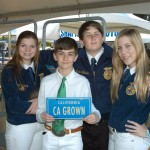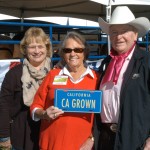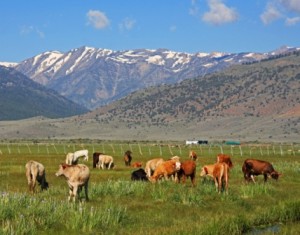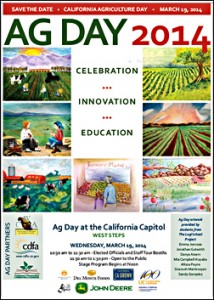In this drought year, it’s my only hope. Yet I can’t see it, hear it or feel it. It lies hidden deep beneath my farm. Without it, my farm and my neighbors go thirsty. All my senses focus on groundwater.
With a depleted snowpack in the Sierra and record low reservoirs, thousands of Central Valley farms will depend on water extracted from wells to keep their plants alive and to grow food. Hundreds of pumps in Valley cities and towns also supply water to tens of thousands of thirsty households. Farmers and city folks will pray our machines will continue to suck water from aquifers below our lands.
We are forced to visualize a new landscape. We will desperately learn how to read maps to determine groundwater depths under our homes and farms, and make educated guesses of how much longer our wells will provide us with the life-giving elixir.
Like an explorer of uncharted seas, I’ve spread out hydrology maps of groundwater levels on my kitchen counter, trying to make sense of the curving lines cutting across our Valley floor. It’s a topography chart of the unseen and concealed treasure under my feet. I run my fingers over the lines, hoping to acquire a feel of this unknown landscape. I have to learn how to read this new terrain and see the invisible.
Location. Location. Location. Real estate with a twist: where a farm or city lies and their water deposits (or lack of) will determine survival or death.
My farm is just south of Fresno and happens to be in a good water zone. I think I’m lucky – this is all unexplored territory. My water table sits about 50 feet beneath the ground’s surface. I have two wells, each dropping 200 feet, and good pumps. In the last 15 years, my water table has dropped 20 to 30 feet. I’m lucky. I thank my father who happened to buy this farm with unknown buried treasures of liquid gold.
Yet in the last few years, the water table has receded at a much quicker pace due to a lack of rainfall to recharge the underground aquifers and to farmers who were forced to tap underground pools because of very limited supplies of surface water. How long will our groundwater last? Who regulates this hidden asset? Who owns this fortune? These questions will haunt me for the future and will have an impact on my children’s dreams of farming.
In California, groundwater operates with very little regulation. The next great debate will challenge private property rights vs. government regulation. I believe we must first explore monitoring systems and create local districts to establish protocols for reasonable and sustainable groundwater use. This will force cities and farms to adopt a regional approach to groundwater management – we all contribute to a liquid savings account.
Yet a challenge will arise – must regions cooperate with each other? Perhaps then a water marketing structure will be established with dollars as the determining factor. That troubles me, because then my worth as a farmer may be determined only by the price of water. Will I then become a prospector and miner, part of a modern-day film “There Will Be Blood”?
Twenty miles to the west, farms sit on a cliff. Literally. The aquifer crashes downward to 200 to 220 feet below ground level. The underground terrain radically shifts and aquifers collapse. Those farmers will struggle, forced to employ deeper wells with huge pumps and for very, very expensive water. Some of that water has high mineral accumulation and is not the best for irrigation. The landscape beneath those farms is not kind.
Yet in other parts of our Valley, like the Sacramento area, it is like living on another planet. Water tables are higher than in the San Joaquin Valley and have not collapsed with this drought. It’s the luck of geography and planning, more rainfall and rivers that recharge the land, a land where two rivers, the Sacramento and San Joaquin, converge to form the Delta.
These aquifers are different, fed for eons by different flows of water. I can’t read their maps – they don’t make sense to an “arid” farmer in the south with my coarse soils. Groundwater acquires a different meaning for them. They are on Mars while I live on Venus.
We reside and farm in a groundwater oasis; the Central Valley Aquifer system blesses our lands. An aquifer is not a river but more like pools of water squeezed between layers of rock and earth. They are fed by rain, seepage from rivers and reservoirs, and snowmelt – also by irrigation. We forget that not all the water I apply to my fields is taken up by plants. In fact, when we furrow irrigate, the majority of the water is not lost but percolates into the earth and recharges the aquifer.
Just as surface water feeds our aquifer, the opposite is true: Pumping can deplete groundwater supplies. Overdrafting means more water is taken than given, and like a bank, we will pay for it in the long run. We think of this drought being a few years old, and quickly ignore decades-long droughts that are part of our history.
We live in a geography of hope. Hope for adequate rain and snow, hope for a short-term drought, hope our groundwater will last long enough to weather this thirst. At times, optimism blinds us; already I anxiously read long-range weather reports and the potential for El Niño next year – which can mean rain.
But the hidden landscape beneath us will quickly become visible, dividing our lands and landowners into the haves and have nots. Water will gradually be depleted – not just on farms but also in small towns and cities. When we turn on our taps and pumps and only a trickle flows, the curse of limited groundwater will be felt.
We are not dinosaurs who blindly faced a changing climate and environment. We can learn to read maps and see the future. We can begin to address this crisis with planning, policy and sacrifice. On our farm, we’ve retired 20 percent of the land and are experimenting with fallowing some of our perennial crops. We may all have to share in this solution. And the dreaded “C” word escapes from our dry lips and parched throats: compromise.



